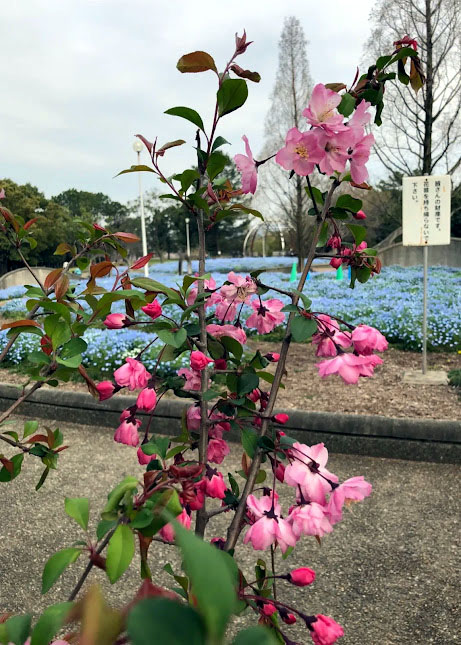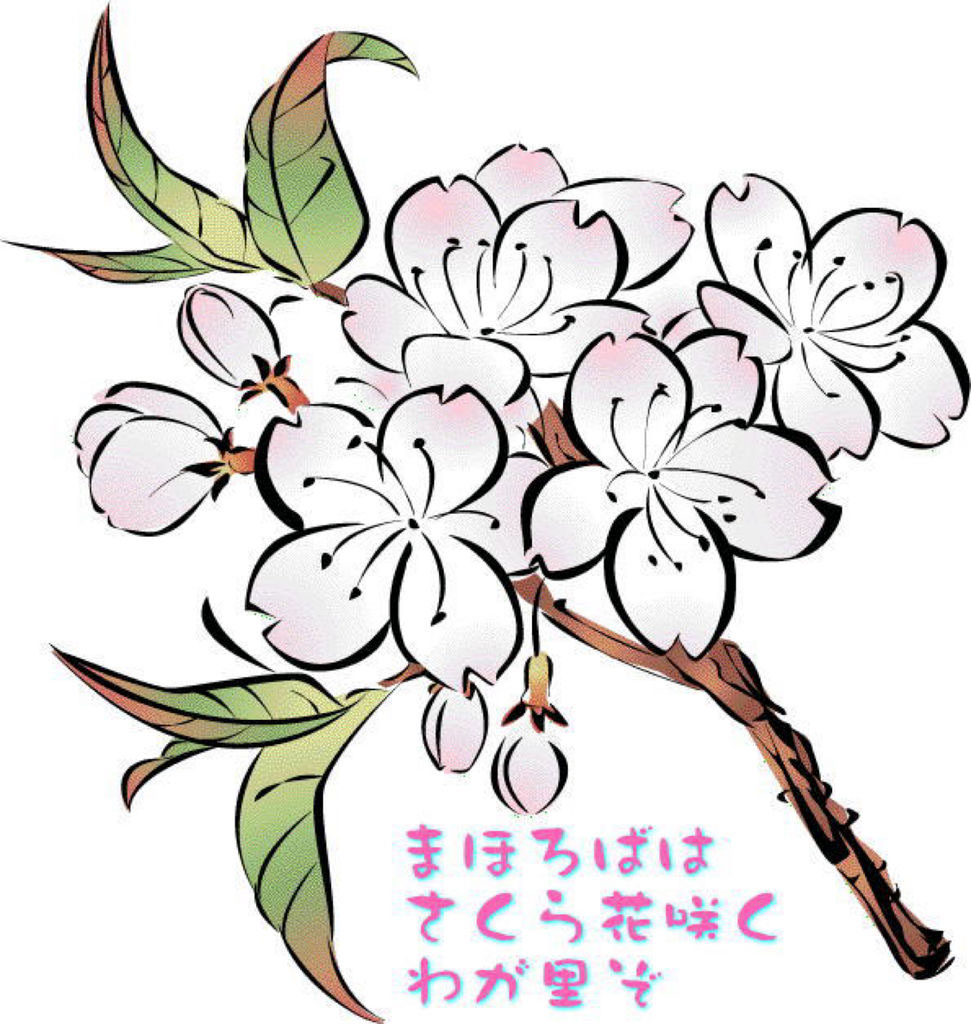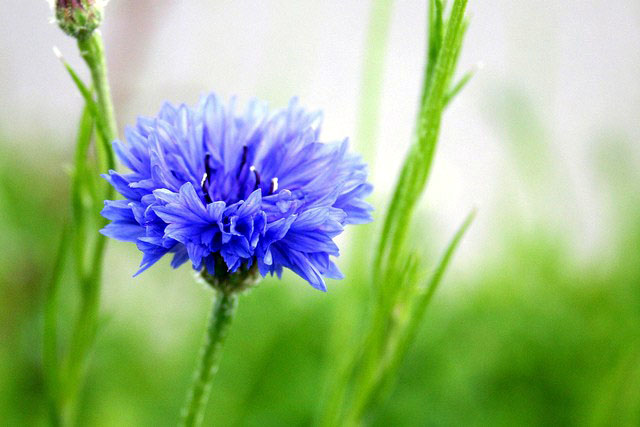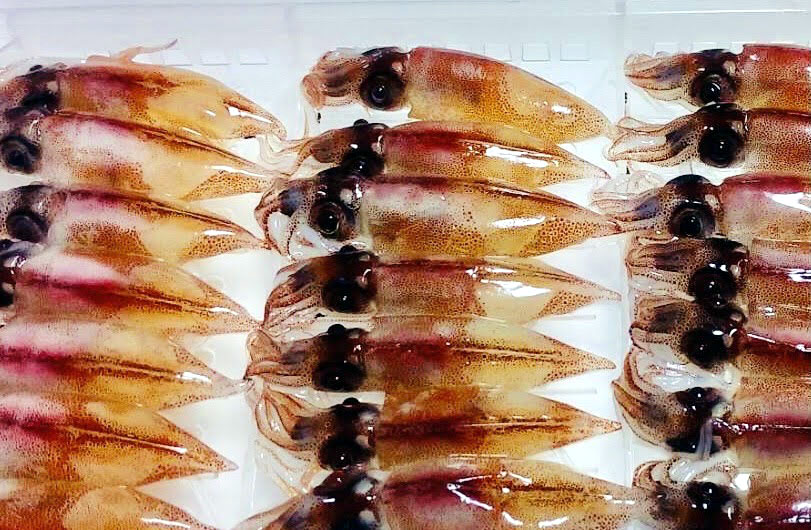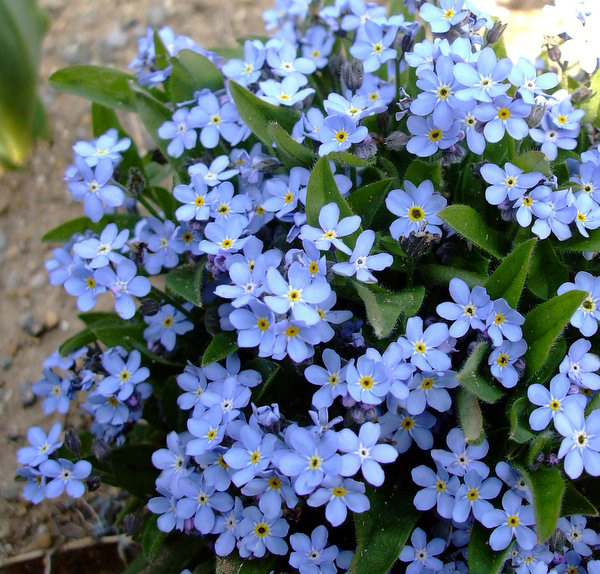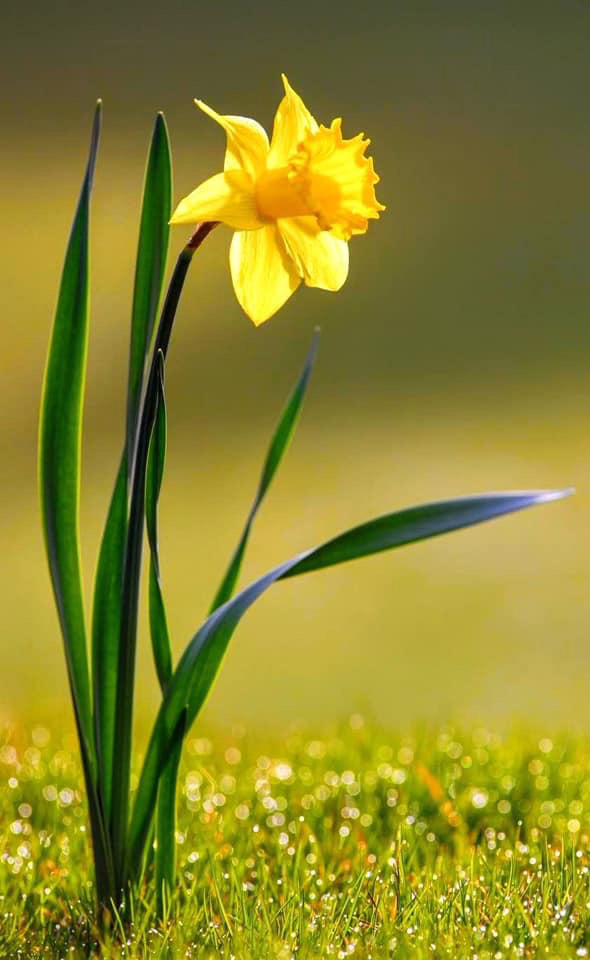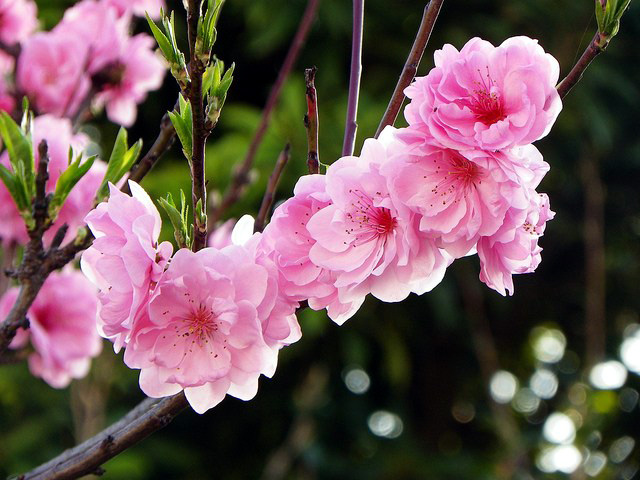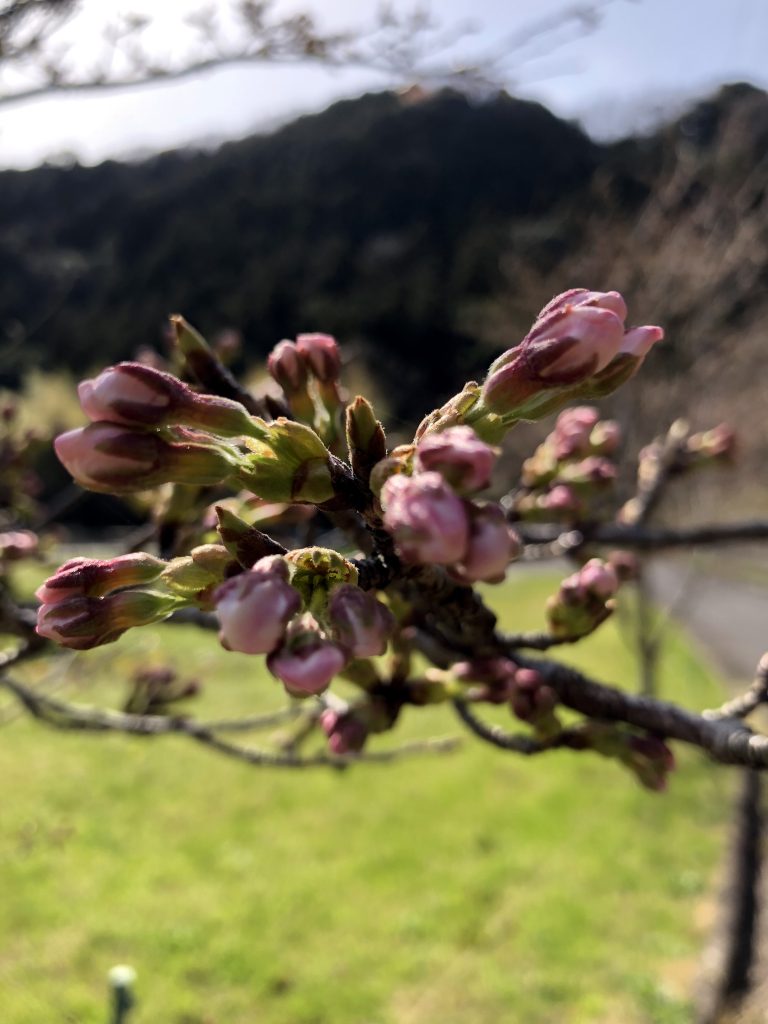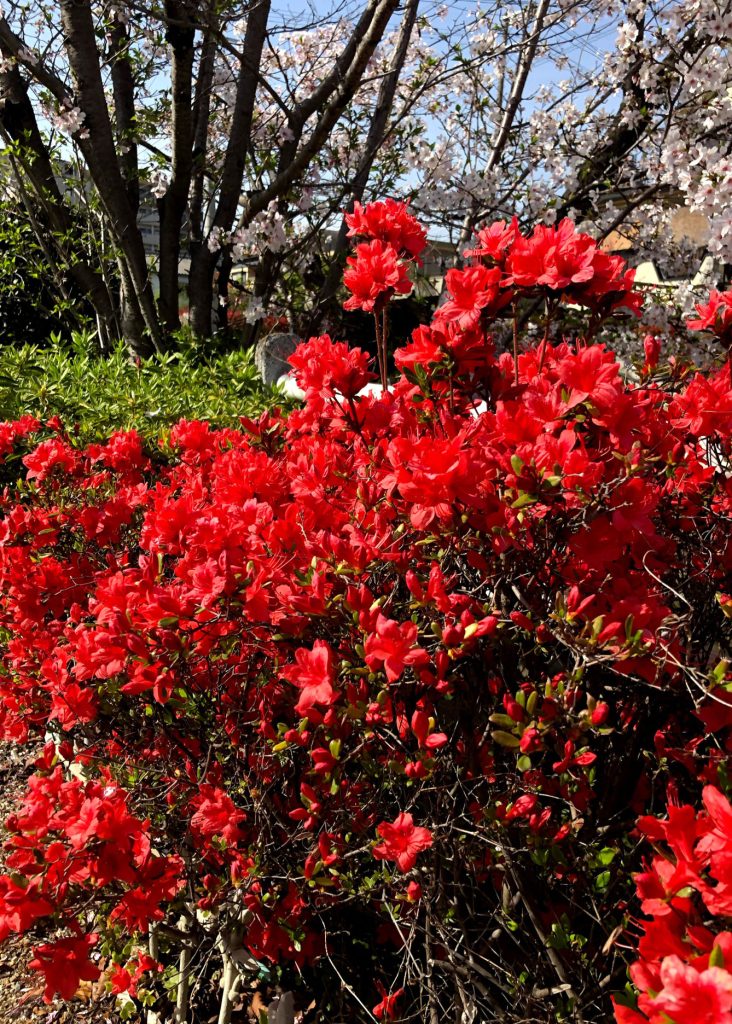
The cherry blossoms have begun to bloom as if the dam has been cut.The temperature feels as warm as early July. People are coming out as if they are tired of waiting for this day. With the start of the new fiscal year, television broadcasts scenes of entrance and initiation ceremonies. It’s the time when energy surges the most throughout the year. Along the riverside cherry blossom trees, red lanterns are lined up, and strips of paper with haiku and tanka sway in the spring breeze. Amidst the cherry blossom trees, bright red flowers bloom where the line of trees breaks. Upon closer inspection, they are Kirishima azaleas. Befitting the Azaleas of the Land of Fire, they possess a redness akin to magma erupting from the earth. Kirishima azaleas were originally cultivated during the Edo period as a horticultural variety known as “Edo Kirishima.” After 1656, when Azaleas native to Mt. Kirishima were introduced to Edo, which had the highest level of horticultural culture in the world, the variety was improved and became very popular throughout Japan. Among them, Noto became the largest hub. In Noto, there are over 500 ancient trees aged over a hundred years scattered throughout. Every year during this season, many people from all over the country flock to Noto in search of Kirishima azaleas. However, this year, this cannot be hoped for. I pray for the swift recovery of Noto.
桜が堰を切ったように咲き始めました。気温も7月上旬の暖かさとか。人もこの日を待ちくたびれたかの様に繰り出しています。新年度ということもあって、テレビでは入学式や入社式の様子が流れています。一年でも最も活力がみなぎる時です。川沿いの桜並木には赤提灯が並び、俳句や短歌を読み込んだ短冊が春風に揺れています。桜並木が途切れた所に真っ赤な花が咲いています。近づいてみると霧島ツツジです。火の国のツツジに相応しく、まるで大地から噴き出るマグマの様な赤さです。キリシマツツジはそもそも江戸霧島という園芸品種で江戸時代に作り出されました。世界最高水準の園芸文化を極めた江戸に霧島山自生のツツジキが入った1656年以降、品種改良され日本中で大流行しました。中でも能登は日本一の集積地になりました。能登には樹齢百年以上の古木が500本以上点在しています。毎年この時期には、能登の霧島ツツジを求めて全国から多くの人が押し寄せます。しかし今年はこれも望めません。能登の一日も早い復興を祈ります。

